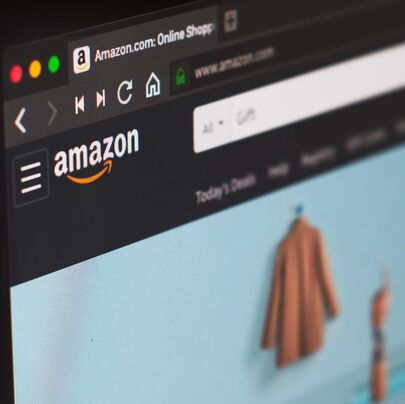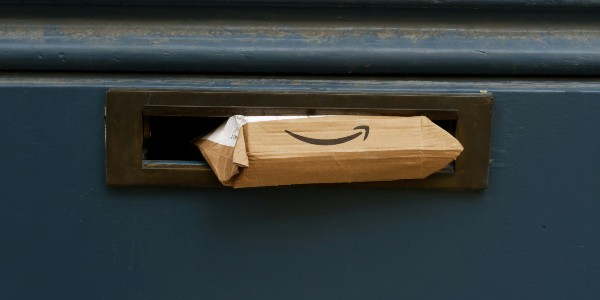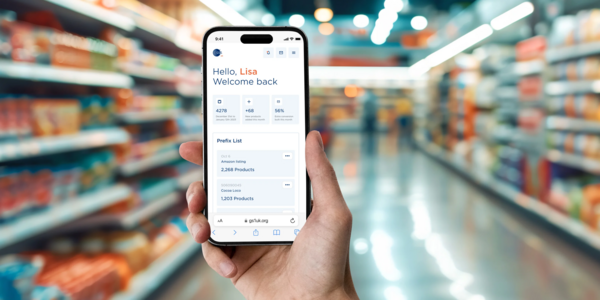November 17, 2025 Industry news
Amazon is expanding its Transparency anti-counterfeiting programme as the packaging and retail industries move toward a more connected, data-rich future powered by 2D barcodes.
The latest development includes a new partnership with US-based Menasha Packaging, announced at Pack Expo in Las Vegas. Menasha joins Amazon’s Transparency Service Provider (TSP) network, offering brands a streamlined way to integrate unique 2D codes into their packaging. These codes help protect against counterfeiting, improve traceability and unlock new opportunities for consumer engagement.
A growing global programme
Launched in 2017, Amazon Transparency enables brands to assign unique serialised codes to each unit sold. These are scanned by Amazon before shipping to verify authenticity and prevent unauthorised listings. The programme now includes more than 88,000 brands globally and has verified over 2.5 billion product units.
The benefits go beyond brand protection. Participating products may receive higher visibility on Amazon’s platform while unauthenticated listings are deprioritised or removed. This is particularly valuable for emerging brands looking to build trust with consumers and protect their reputation from counterfeit threats.

We’re creating billions of codes every year. There are multiple steps that go into a brand’s participation, including requesting and managing codes, integrating them into existing software platforms and incorporating them in a package’s graphic design.”
Michael Manley
Global head of technical business development at Amazon
Menasha’s role in scaling serialisation
Menasha Packaging, part of Menasha Corporation, is North America’s largest independent provider of packaging and supply chain solutions. Its new role as a Transparency Service Provider reflects a broader shift in the packaging industry—from supplying materials to delivering integrated, data-driven services.
The company’s advanced variable data printing capabilities and end-to-end co-packing services allow brands to embed Transparency codes directly into packaging workflows. This includes support for a wide range of formats, from folding cartons to corrugate, and the flexibility to handle both large and short production runs.
“We are pleased to welcome Menasha Packaging to the Transparency Service Provider programme,” said Michael Manley, global head of technical business development at Amazon. “Their advanced VDP capabilities and comprehensive co-packing services, combined with seamless Transparency API integration, enable brands to protect their products through a simplified, single workflow solution.”
Menasha’s offering also aligns with Amazon’s sustainability goals, with packaging options that meet Ship In Product Packaging (SIPP) requirements—reducing waste and improving efficiency across the fulfilment process.
Preparing for a new era of transparency
The expansion of Transparency comes at a time when the retail and packaging sectors are preparing for a widespread shift to QR codes powered by GS1.

These next-generation codes can carry significantly more data than traditional barcodes, enabling a single code to support everything from product authentication and traceability to consumer engagement, sustainability information and recall readiness.
Currently, many brands are forced to print multiple codes on packaging—one for point of sale, another for logistics and yet another for consumer engagement. This fragmentation creates design challenges and operational inefficiencies.
“You’re trying to make a compelling brand story in a smaller and smaller space – it’s just a nightmare,” said Manley. “Now, we can consolidate tracking, anti-counterfeiting and consumer information into a single code.”
Menasha’s design manager for e-commerce and omni-channel, Evan Padilla, echoed this sentiment at Pack Expo, explaining that "the goal is to condense that down to just one [code]. There are so many more added benefits on the back end of that.”
The global ambition is for the majority of retail point-of-sale systems to be capable of scanning QR codes powered by GS1 by the end of 2027, in parallel with existing barcodes. This shift is expected to streamline operations, reduce packaging clutter and enable richer digital experiences for consumers.
A strategic opportunity for brands
For brands, early engagement with Amazon Transparency offers a strategic advantage. It provides a practical entry point into serialisation and prepares them for the broader industry shift to 2D barcodes.
Beyond brand protection, Transparency codes offer a direct channel to connect with consumers. Shoppers can scan the codes using the Amazon Shopping or Transparency apps to verify authenticity and access additional content—such as product information, promotions or sustainability credentials.
The programme also delivers operational benefits. Brands gain real-time insights into product movement and authenticity at the batch or lot level, helping to identify supply chain issues and reduce the risk of recalls or reputational damage.
As the retail sector embraces more intelligent packaging and data-driven supply chains, initiatives like Amazon Transparency are helping to lay the foundations. By adopting serialisation and QR codes powered by GS1 today, brands can future-proof their operations and unlock new value across the supply chain.



